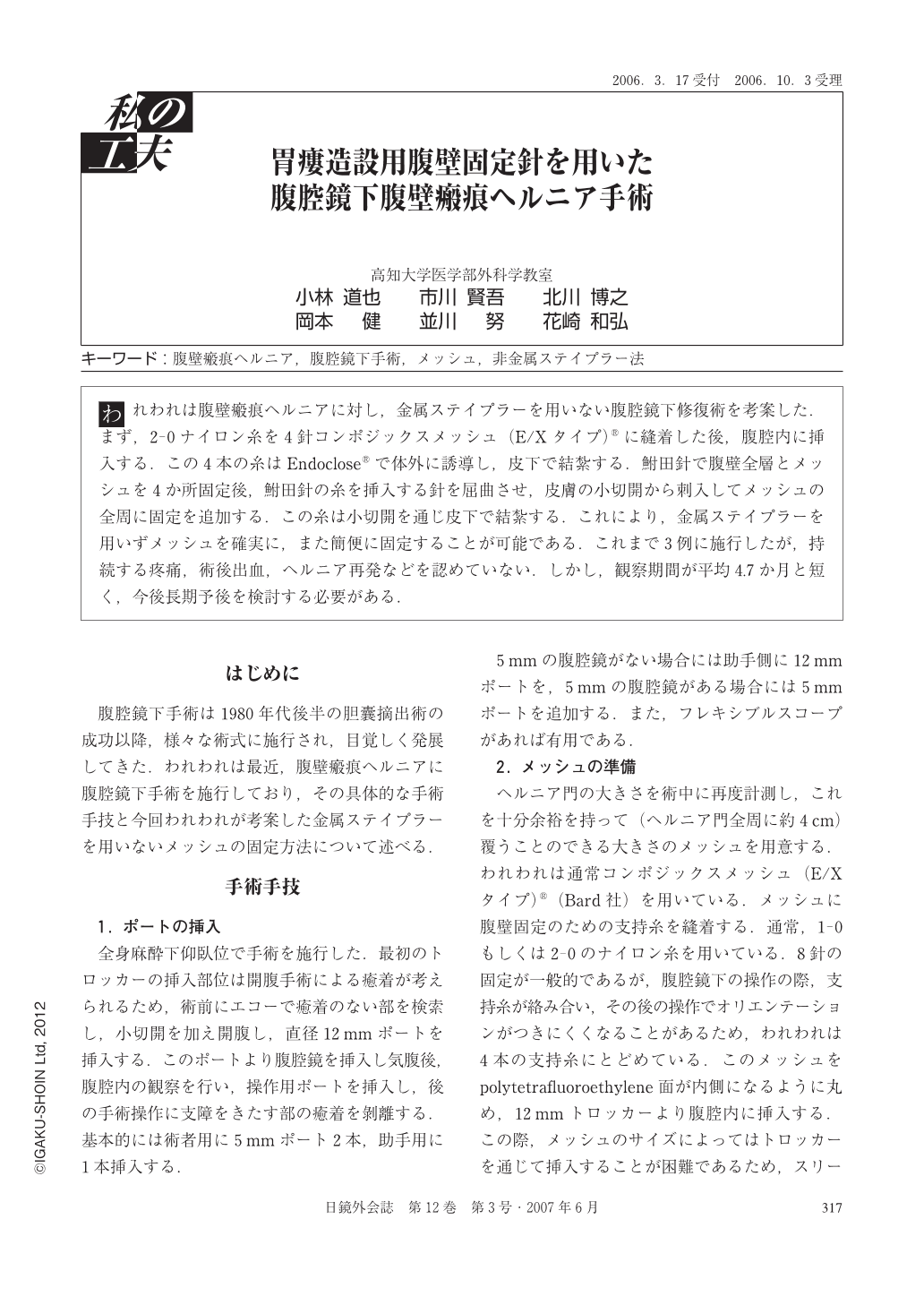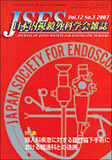Japanese
English
- 有料閲覧
- Abstract 文献概要
- 1ページ目 Look Inside
- 参考文献 Reference
われわれは腹壁瘢痕ヘルニアに対し,金属ステイプラーを用いない腹腔鏡下修復術を考案した.まず,2-0ナイロン糸を4針コンポジックスメッシュ(E/Xタイプ)Ⓡに縫着した後,腹腔内に挿入する.この4本の糸はEndocloseⓇで体外に誘導し,皮下で結紮する.鮒田針で腹壁全層とメッシュを4か所固定後,鮒田針の糸を挿入する針を屈曲させ,皮膚の小切開から刺入してメッシュの全周に固定を追加する.この糸は小切開を通じ皮下で結紮する.これにより,金属ステイプラーを用いずメッシュを確実に,また簡便に固定することが可能である.これまで3例に施行したが,持続する疼痛,術後出血,ヘルニア再発などを認めていない.しかし,観察期間が平均4.7か月と短く,今後長期予後を検討する必要がある.
Recent advances in laparoscopic surgery have made various abdominal procedures possible. To avoid wound infection, mesh repair of abdominal incisional hernias is performed laparoscopically. We describe a new procedure that allows mesh fixation to the abdominal wall without the use of a stapler.
Four anchoring sutures are made using a suture-grasping device. These threads are tied in the subcutaneous layer. Four transabdominal sutures are made with a Funada's gastropexy device, which are tied on the skin level and then removed after one week. Additional sutures are made circumferentially with a modified Funada's gastropexy device. These threads are tied in the subcutaneous layer. This new method for mesh fixation using simple suturing techniques is less time consuming than conventional procedures. We have performed this procedure in 3 cases. After a mean follow-up period of 4.7 months, there were no postoperative complications such as persistent pain, bleeding, or recurrence of hernia. Further investigation is necessary to determine if this new method of mesh fixation could replace existing conventional techniques.

Copyright © 2007, JAPAN SOCIETY FOR ENDOSCOPIC SURGERY All rights reserved.


